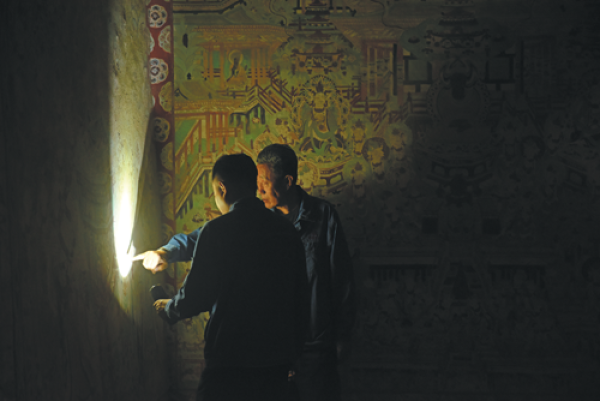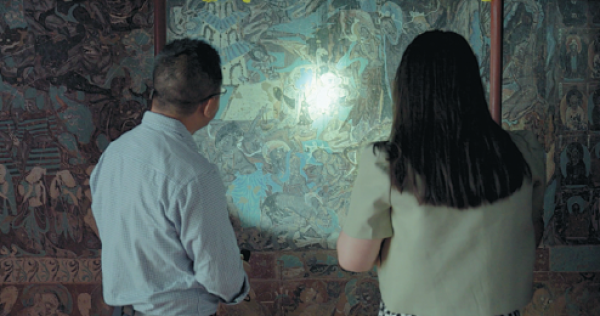A deeper dive into Dunhuang
Documentary goes behind the scenes to show the work undertaken at world-famous site, Xu Fan reports.
Unlike most of her fellow postgraduates, who landed jobs in big cities such as Shanghai, Zhang Xiaoyang chose to work at Dunhuang Academy when she graduated from her archaeology major at Zhejiang University three years ago.

Veteran fresco restorer Li Bo and his protege Li Can examine a mural at the Mogao Caves in Dunhuang, Gansu province. [Photo/China Daily]
Despite being the world's largest treasure trove of Buddhist art, living conditions in Dunhuang, which sits in the Gobi Desert in Northwest China's Gansu province, are harsher than in China's metropolises.
Zhang, who is in her late 20s, has an intense routine. Assigned two stressful tasks, she spends most of the day battling sand and wind with the excavation team in Tianwangtang, the relic site of a Buddhist tower that is located on a hill at the Mogao Caves in Dunhuang.
At night, she writes academic reports on the discoveries in Cave 254, which was created during the Northern Wei Dynasty (386-534) and is one of the oldest caves in Dunhuang.

Zhang Xiaogang (left), head of Dunhuang Academy's archaeology institute, discusses the art of murals with young archaeologist Zhang Xiaoyang. [Photo/China Daily]
However, the biggest challenge for the young archaeologist is not the workload. It is trying to obtain some academic achievements within her three-year tenure at Dunhuang, a goal she set when she decided to take the job.
-
As AI encounters Dunhuang's art, the ancient caisson ceiling bridges centuries to the present.
View all stories

 Gansu thrives from green development
Gansu thrives from green development  >
>